Sergio Martin-del-Campo
Addressing practical challenges in Active Learning via a hybrid query strategy
Oct 07, 2021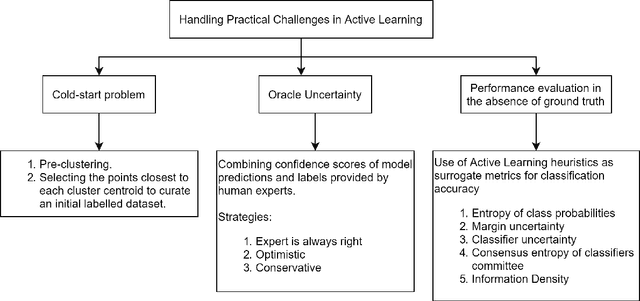
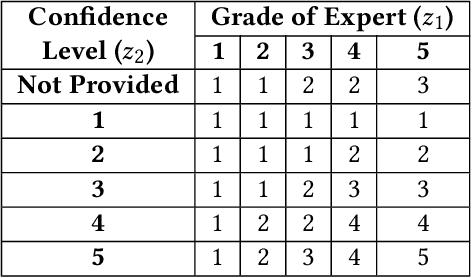
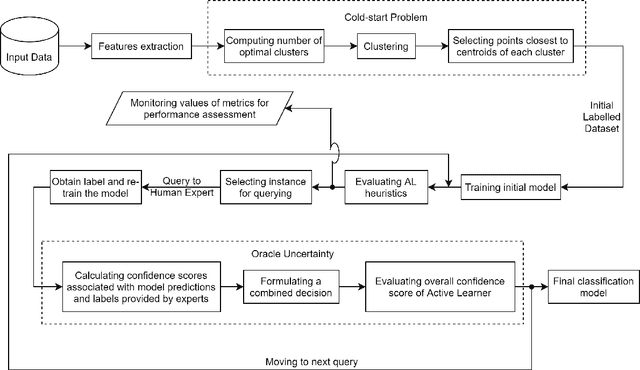
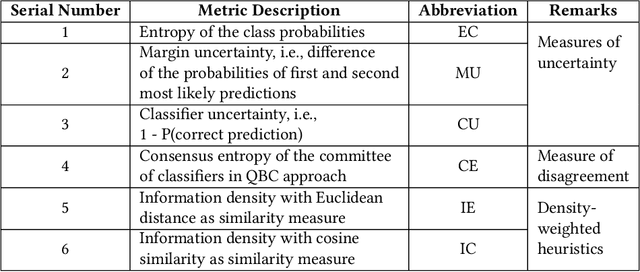
Abstract:Active Learning (AL) is a powerful tool to address modern machine learning problems with significantly fewer labeled training instances. However, implementation of traditional AL methodologies in practical scenarios is accompanied by multiple challenges due to the inherent assumptions. There are several hindrances, such as unavailability of labels for the AL algorithm at the beginning; unreliable external source of labels during the querying process; or incompatible mechanisms to evaluate the performance of Active Learner. Inspired by these practical challenges, we present a hybrid query strategy-based AL framework that addresses three practical challenges simultaneously: cold-start, oracle uncertainty and performance evaluation of Active Learner in the absence of ground truth. While a pre-clustering approach is employed to address the cold-start problem, the uncertainty surrounding the expertise of labeler and confidence in the given labels is incorporated to handle oracle uncertainty. The heuristics obtained during the querying process serve as the fundamental premise for accessing the performance of Active Learner. The robustness of the proposed AL framework is evaluated across three different environments and industrial settings. The results demonstrate the capability of the proposed framework to tackle practical challenges during AL implementation in real-world scenarios.
Dictionary learning approach to monitoring of wind turbine drivetrain bearings
Feb 04, 2019



Abstract:Condition monitoring is central to the efficient operation of wind farms due to the challenging operating conditions, rapid technology development and high number of aging wind turbines. In particular, predictive maintenance planning requires early detection of faults with few false positives. This is a challenging problem due to the complex and weak signatures of some faults, in particular of faults occurring in some of the drivetrain bearings. Here, we investigate recently proposed condition monitoring methods based on unsupervised dictionary learning using vibration data recorded over 46 months under typical industrial operations, thereby contributing novel test results and real world data that is made publicly available. Results of former studies addressing condition--monitoring tasks using dictionary learning indicate that unsupervised feature learning is useful for diagnosis and anomaly detection purposes. However, these studies are based on small sets of labeled data from test rigs operating under controlled conditions that focus on classification tasks, which are useful for quantitative method comparisons but gives little information about how useful these approaches are in practice. In this study dictionaries are learned from gearbox vibrations in six different turbines and the dictionaries are subsequently propagated over a few years of monitoring data when faults are known to occur. We perform the experiment using two different sparse coding algorithms to investigate if the algorithm selected affects the features of abnormal conditions. We calculate the dictionary distance between the initial and propagated dictionaries and find time periods of abnormal dictionary adaptation starting six months before a drivetrain bearing replacement and one year before the resulting gearbox replacement. We also investigate the distance between dictionaries learned from geographically nearby
Dictionary Learning with Equiprobable Matching Pursuit
Nov 28, 2016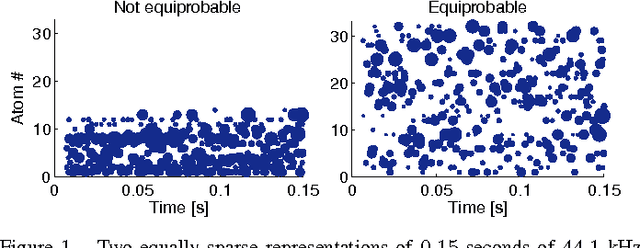
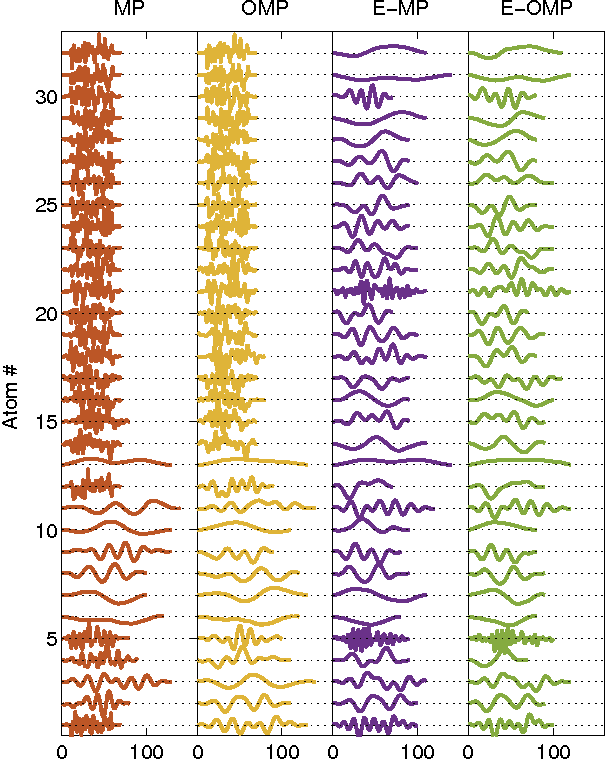
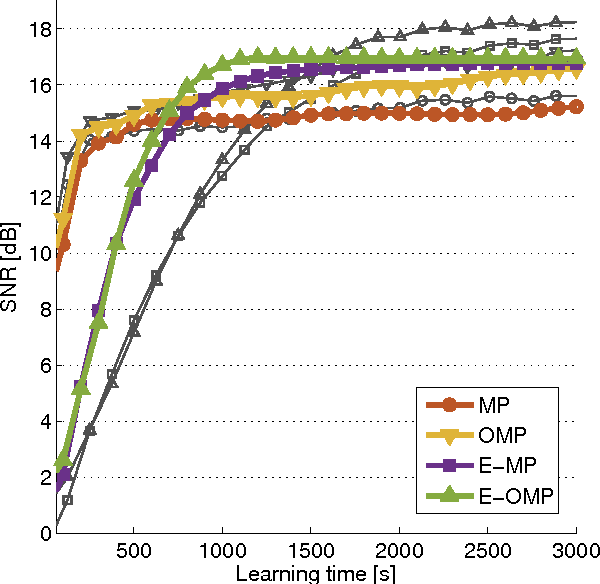
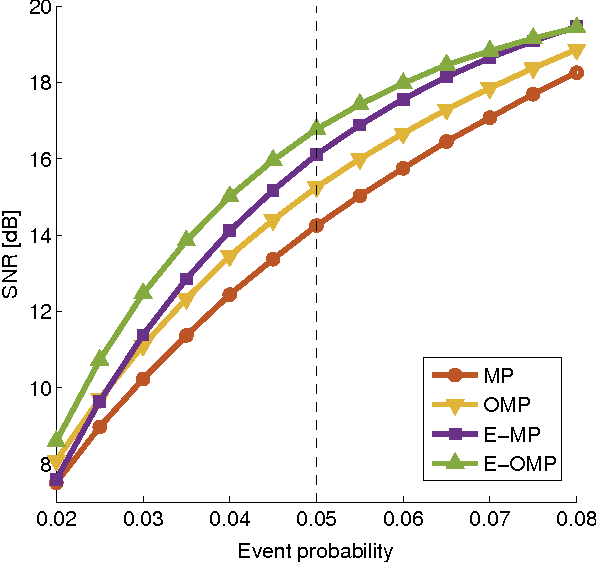
Abstract:Sparse signal representations based on linear combinations of learned atoms have been used to obtain state-of-the-art results in several practical signal processing applications. Approximation methods are needed to process high-dimensional signals in this way because the problem to calculate optimal atoms for sparse coding is NP-hard. Here we study greedy algorithms for unsupervised learning of dictionaries of shift-invariant atoms and propose a new method where each atom is selected with the same probability on average, which corresponds to the homeostatic regulation of a recurrent convolutional neural network. Equiprobable selection can be used with several greedy algorithms for dictionary learning to ensure that all atoms adapt during training and that no particular atom is more likely to take part in the linear combination on average. We demonstrate via simulation experiments that dictionary learning with equiprobable selection results in higher entropy of the sparse representation and lower reconstruction and denoising errors, both in the case of ordinary matching pursuit and orthogonal matching pursuit with shift-invariant dictionaries. Furthermore, we show that the computational costs of the matching pursuits are lower with equiprobable selection, leading to faster and more accurate dictionary learning algorithms.
Towards zero-configuration condition monitoring based on dictionary learning
Feb 12, 2015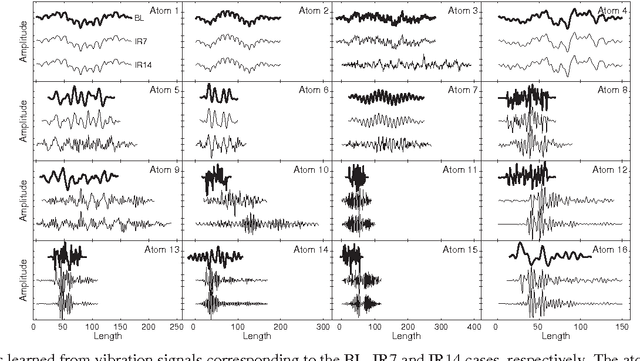
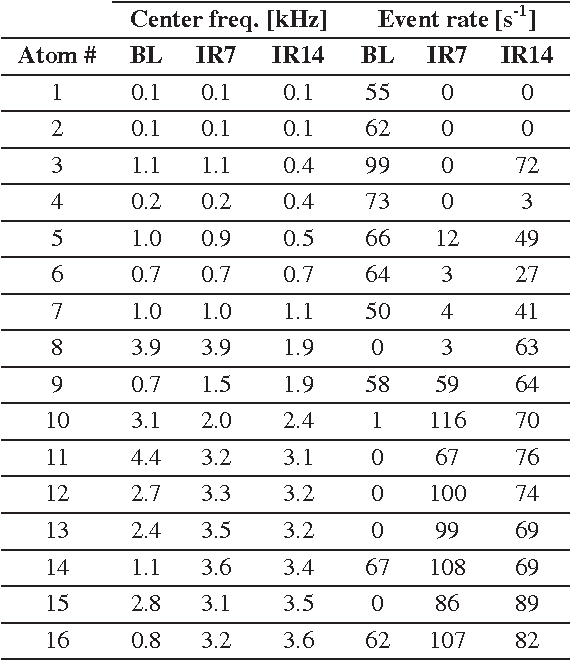
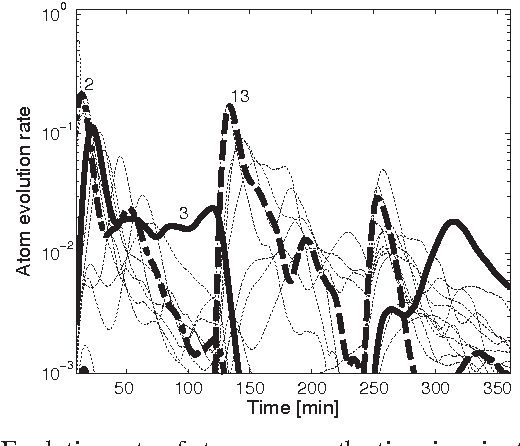

Abstract:Condition-based predictive maintenance can significantly improve overall equipment effectiveness provided that appropriate monitoring methods are used. Online condition monitoring systems are customized to each type of machine and need to be reconfigured when conditions change, which is costly and requires expert knowledge. Basic feature extraction methods limited to signal distribution functions and spectra are commonly used, making it difficult to automatically analyze and compare machine conditions. In this paper, we investigate the possibility to automate the condition monitoring process by continuously learning a dictionary of optimized shift-invariant feature vectors using a well-known sparse approximation method. We study how the feature vectors learned from a vibration signal evolve over time when a fault develops within a ball bearing of a rotating machine. We quantify the adaptation rate of learned features and find that this quantity changes significantly in the transitions between normal and faulty states of operation of the ball bearing.
 Add to Chrome
Add to Chrome Add to Firefox
Add to Firefox Add to Edge
Add to Edge